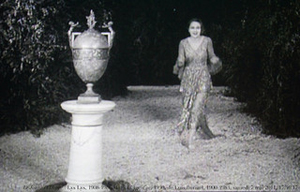Studio 28: An Art House Amelie Poulain Would Love (And Did)
- SUBSCRIBE
- ALREADY SUBSCRIBED?
BECOME A BONJOUR PARIS MEMBER
Gain full access to our collection of over 5,000 articles and bring the City of Light into your life. Just 60 USD per year.
Find out why you should become a member here.
Sign in
Fill in your credentials below.
 Just as the enjoyment of a film can be impacted by the movie theatre one sees it in, so the attraction of a theatre can depend on the neighborhood where it’s located. Studio 28 would be a gem of a cinema whatever the location, but its charm is magnified by being nestled in the heights of Montmartre.
Just as the enjoyment of a film can be impacted by the movie theatre one sees it in, so the attraction of a theatre can depend on the neighborhood where it’s located. Studio 28 would be a gem of a cinema whatever the location, but its charm is magnified by being nestled in the heights of Montmartre.
To get to it, the movie-goer must first cross the honky-tonk area by Pigalle (the closest metro is Blanche), which can be an experience in itself, especially on a weekend evening. Then one navigates one’s way up the fantastic market street, rue Lepic, trying not to be tempted by the variety of delicious produce on offer. Finally there is a little climb up the rue Tholozé, practically at the top of the Butte.
Studio 28 is a classic art et essai theatre, and like other art houses it mixes standard fare (eg Zero Dark Thirty) which brings in revenue, with less commercial films. It also features retrospectives (Sunday and Tuesday), films for children (on Wednesday and Saturday), and monthly theme nights with speakers.
This being Montmartre, the theatre harkens back to an older vision of Paris. The screening room is plush, with baroque wall lights designed by no less than Jean Cocteau, in the form of yards-long tentacles topped with shades like Punchinello hats. The screen itself is first-rate and relatively large, not the home-entertainment-sized rectangle found in some theatres. Before the movie, spectators can avail themselves of a bar or, if they have more time and an appetite, a restaurant, both just outside the screening room.
The long entrance foyer is filled with memorabilia (as well as a piano). Lining the walls are letters and autographs from old and contemporary film stars, vintage posters (Abel Gance’s Napoléon is favored with several), and even plaster casts of the feet of personalities from Jeanne Moreau to Jean Marais.
 The history on view at Studio 28 isn’t just a matter of décor. The theatre was founded in 1928, the first Parisian cinema dedicated to avant-garde films. It also became a meeting place for modernist artists, and a site for concerts and exhibitions. Its place in film history was assured when it showed Luis Buñuel’s scandal-making L’Age d’Or in 1930, causing a riot in the theatre and the banning of the film (thus making it and its director, Luis Buñuel, world famous). Studio 28 also earned a footnote of a different kind more recently, when a scene of Amelie was filmed in the theatre. Although the cinema shows nearly a dozen very different films every week, it has only one screen. The extra bit of movie magic that you get here is definitely not to be found in a multiplex.
The history on view at Studio 28 isn’t just a matter of décor. The theatre was founded in 1928, the first Parisian cinema dedicated to avant-garde films. It also became a meeting place for modernist artists, and a site for concerts and exhibitions. Its place in film history was assured when it showed Luis Buñuel’s scandal-making L’Age d’Or in 1930, causing a riot in the theatre and the banning of the film (thus making it and its director, Luis Buñuel, world famous). Studio 28 also earned a footnote of a different kind more recently, when a scene of Amelie was filmed in the theatre. Although the cinema shows nearly a dozen very different films every week, it has only one screen. The extra bit of movie magic that you get here is definitely not to be found in a multiplex.
photo 1 by Son of Groucho [CC BY 2.0], via Flickr
photo 2 screen capture by Renaud Camus [CC-BY-2.0], via Wikimedia Commons
More in french cinema, Studio 28




